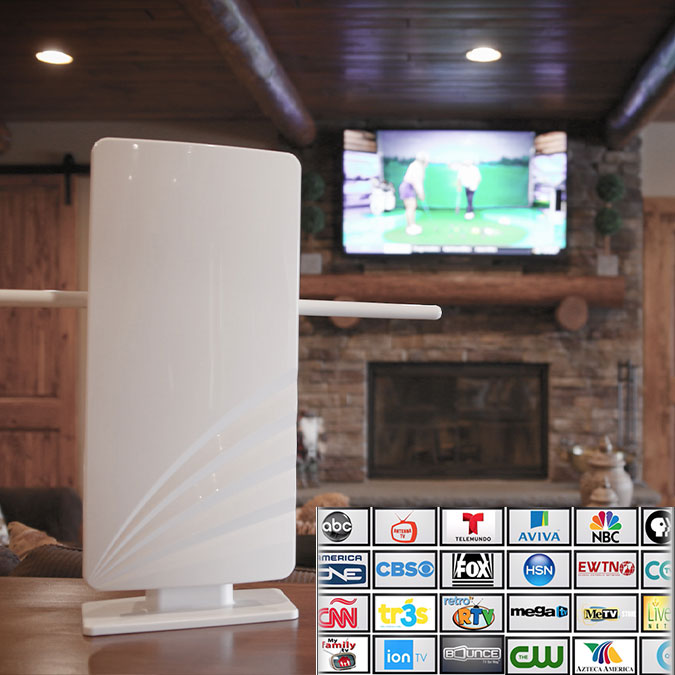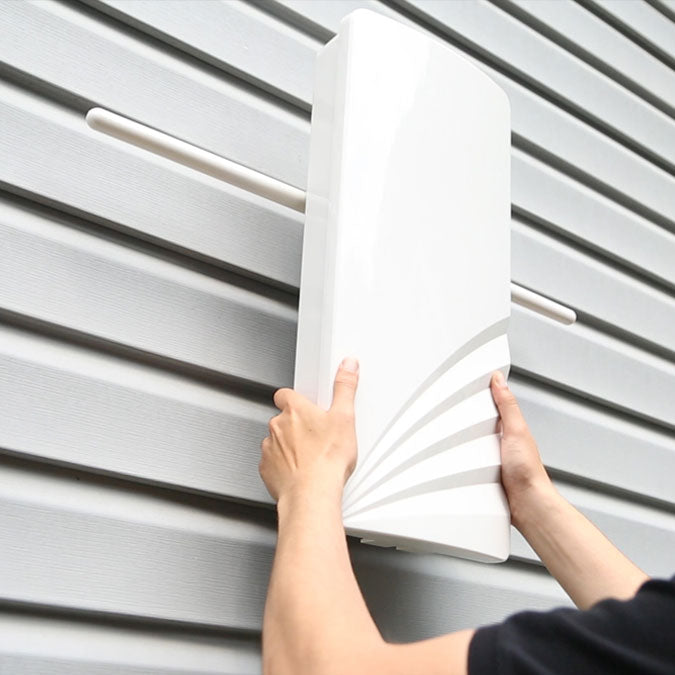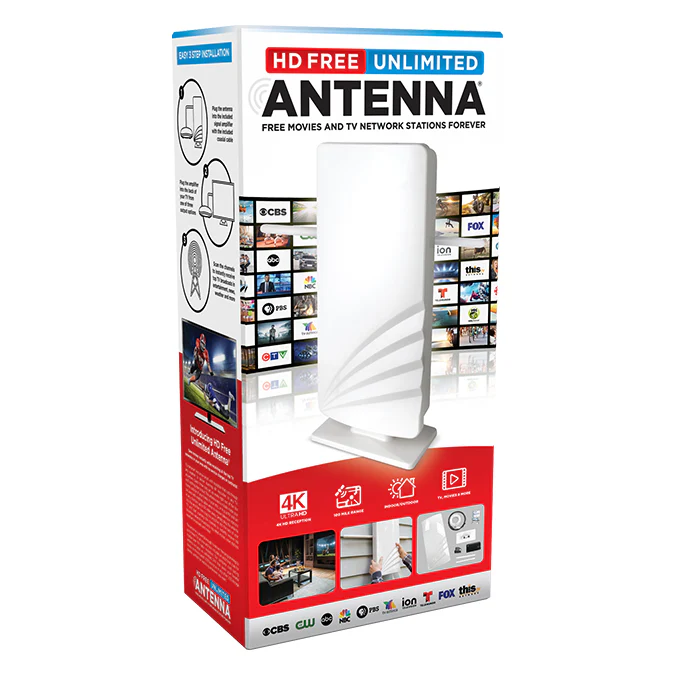An HD TV free antenna is a device used to receive high-definition television signals over the air, allowing users to access local TV channels without a subscription. Unlike cable or satellite, this type of antenna captures broadcast signals that are freely transmitted by TV stations, including major networks like ABC, NBC, CBS, and FOX.
The antenna works by picking up electromagnetic waves transmitted by broadcast towers, converting them into electrical signals that your television can interpret. Many of these antennas are designed to receive both UHF (Ultra High Frequency) and VHF (Very High Frequency) signals, which are used by TV channels to broadcast their content. HD TV antennas come in various types, including indoor and outdoor models, to suit different reception needs.
The main appeal of an HD TV antenna is its ability to offer free, high-quality TV content without the monthly costs associated with cable or satellite services. This makes it an attractive choice for individuals looking to cut down on their entertainment expenses.
Benefits of Using an HD TV Free Antenna
Using an HD TV free antenna comes with several benefits that can enhance your entertainment experience. One of the most significant advantages is the cost savings. Unlike cable and satellite subscriptions, which come with monthly fees, an HD TV antenna is a one-time investment. Once installed, you can enjoy a wide variety of channels for free.
Another benefit is the quality of the broadcast. Over-the-air (OTA) signals received by an HD TV antenna are often less compressed than those provided by cable companies, resulting in better picture and audio quality. This means you get to enjoy a true high-definition viewing experience, often even surpassing the quality of streaming services.
In addition, using an antenna allows you to access local news, weather reports, and sports events, which are crucial for staying informed about your community. Unlike some streaming services, HD TV antennas provide immediate access to live local programming without lag or delays.
Types of HD TV Free Antennas Available
There are several types of HD TV antennas available on the market, each designed for different situations and reception needs. The two primary categories are indoor and outdoor antennas. Indoor antennas are small, easy to install, and perfect for those living in urban areas where broadcast towers are nearby. These antennas are typically placed near a window or on a wall to get the best reception.
Outdoor antennas, on the other hand, are larger and are usually mounted on the roof or an elevated structure. They are ideal for rural areas where signals may be weaker due to distance from the broadcast towers. Outdoor antennas generally provide better reception and are capable of picking up signals from a greater distance.
Another variation is directional versus omnidirectional antennas. Directional antennas need to be pointed towards the broadcast tower to receive signals, making them suitable for areas with known broadcast sources. Omnidirectional antennas can pick up signals from multiple directions, which is useful if you are in a location with multiple nearby broadcast towers.
How to Choose the Best HD TV Free Antenna for Your Needs
Choosing the best HD TV free antenna depends on several factors, including your location, the distance from broadcast towers, and your viewing preferences. The first step is to determine the distance between your home and the nearest broadcast towers. Websites like TV Fool and AntennaWeb can help you find this information and determine which type of antenna will work best for you.
If you live close to multiple broadcast towers, an indoor antenna should be sufficient. However, if you’re in a rural area or far from the towers, you may need an outdoor or amplified antenna to ensure a strong signal. The type of TV you own also plays a role—many modern HD TVs have built-in tuners, but older models may require an additional converter box.
Consider your aesthetic preferences as well. Indoor antennas come in sleek designs that blend into your home’s decor, while outdoor antennas are more conspicuous but offer better performance. Evaluating these factors will help you make an informed decision that suits your needs.
Installation Tips for Your HD TV Free Antenna
Installing your HD TV free antenna correctly is crucial for getting the best possible reception. For indoor antennas, place the antenna near a window or an exterior wall to maximize signal strength. Avoid placing it near metal objects or electronic devices that could interfere with the signal.
For outdoor antennas, the higher you can mount it, the better. Ideally, the antenna should be placed on the roof or an elevated pole to reduce obstructions such as buildings or trees. Ensure that the antenna is securely mounted to prevent movement due to wind, as even slight shifts can affect signal quality.
Use a compass or a smartphone app to help orient your antenna towards the nearest broadcast towers. Most antennas come with instructions that guide you on how to connect the coaxial cable from the antenna to your TV. Once installed, use your TV’s settings to scan for available channels and adjust the antenna if necessary to receive the best signal.
Common Problems with HD TV Free Antennas and How to Fix Them
Despite their benefits, HD TV free antennas can encounter problems, such as weak or inconsistent signals. One common issue is poor reception due to obstacles like buildings, trees, or even weather conditions. If you’re experiencing signal problems, try moving the antenna to a different location or higher elevation to minimize obstructions.
Another issue could be interference from electronic devices or Wi-Fi routers. Ensure that your antenna is placed away from such devices to avoid interference. For outdoor antennas, regular maintenance, such as checking for loose connections or adjusting the direction of the antenna, can help improve signal quality.
If you live far from broadcast towers, consider using an amplified antenna. Amplifiers can boost weak signals, although they may also amplify noise, so use them cautiously. A digital signal meter can also be helpful to fine-tune your antenna placement for the best results.
How to Scan for Channels with an HD TV Free Antenna
Once your HD TV free antenna is installed, the next step is to scan for channels. This process allows your TV to detect all the available channels that the antenna is receiving. Most modern TVs come with a built-in tuner that makes this process straightforward.
To scan for channels, use your TV remote to access the settings menu. Look for an option labeled “Channel Setup” or “Channel Scan.” Select the “Antenna” or “Air” option and start the scanning process. This may take several minutes as your TV searches for available channels and stores them in its memory.
If you’re not getting the expected number of channels, try adjusting the antenna’s position and scanning again. It’s important to periodically rescan for channels, especially if new channels become available or if you reposition the antenna.
Comparing HD TV Free Antennas to Cable and Satellite TV
Comparing HD TV free antennas to cable and satellite TV highlights several important differences, particularly when it comes to cost and content. Cable and satellite services provide a wide range of channels, including premium content and on-demand services, but they come at a high monthly cost. In contrast, HD TV antennas provide access to local broadcast channels for free.
With an antenna, you can still enjoy major networks like ABC, NBC, and CBS, as well as local news and sports. However, you won’t have access to specialized channels like those provided by premium cable subscriptions. The content received via an HD TV antenna is limited to over-the-air broadcasts, which may not be sufficient for viewers looking for a diverse range of entertainment.



